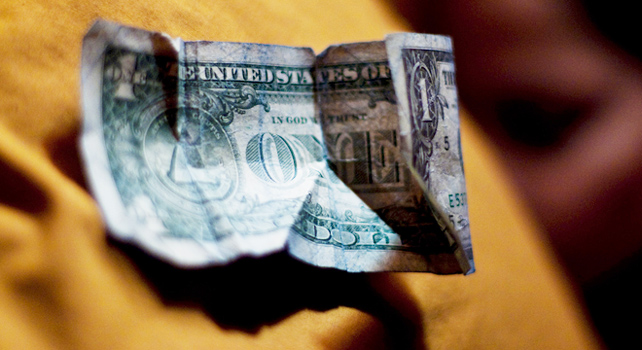At 19, Sahil Lavingia has already designed scores of apps and worked at one of the hottest startups in the world--but he's only getting started.

At 18, Sahil Lavingia helped design the massively successful Pinterest, currently the third most popular social network, behind Twitter and Facebook. The Wall Street Journal has a Pinterest board. Barack Obama has one.
Then, a year in, Lavingia left. Now he's starting Gumroad, a new service which he says will revolutionize social shopping and e-commerce--and maybe even alter the way people create. Here’s how it works: Say you’ve made something--a song, a blog post, an app, etc.--and you want to make a little money from it. Just upload it, price it, then Gumroad, whose slogan is, “Sell anything you can share,” provides you with a custom product URL that is easily shareable across your existing social networks. Gumroad makes money by taking a 5% cut out of each purchase.
[vimeo 39302830]
 “I was at home on a Friday night in Palo Alto and I really wanted to learn realistic icon design," Lavingia says. "So I sat down at my computer and worked on this photorealistic pencil I’d designed in Photoshop. It took me around four hours and I thought, 'Wait a sec--if I follow a bunch of designers on Twitter, a bunch of designers probably follow me, and I should try to sell this. I could just put it up for a buck, and if you buy it, I’m gonna do it again.”
“I was at home on a Friday night in Palo Alto and I really wanted to learn realistic icon design," Lavingia says. "So I sat down at my computer and worked on this photorealistic pencil I’d designed in Photoshop. It took me around four hours and I thought, 'Wait a sec--if I follow a bunch of designers on Twitter, a bunch of designers probably follow me, and I should try to sell this. I could just put it up for a buck, and if you buy it, I’m gonna do it again.”
The trouble was, Lavingia couldn’t find an online marketplace that fit his needs. Most services charged a monthly subscription fee, which doesn't make a lot of sense to pay if you’re only selling something for a dollar. So by the following Monday, after a marathon weekend during which Lavingia did little more than code and sleep, Gumroad was born.
Lavingia is the latest poster boy for the new young, Flux-y breed of serial entrepreneurs. He started designing iPhone apps at age 14 and dropped out of his first semester at USC to join Pinterest. “I only want to work on things that solve my own problems,” he says. The lessons he learned at Pinterest loom large over his work at Gumroad. Mostly important, he says, he's learned not to settle into too specific of a niche. Instead, he's casting a wide net.
I think the best products totally surprise you because users are doing things that you have no idea about.“At Pinterest, even though we approached the design and functionality of it from a shopping perspective, it could be used for all sorts of stuff. And there’s no messaging in it that says, ‘You should use this for social shopping.’” Lavingia says the same principle holds true for Gumroad. “I would never say ‘Gumroad is for musicians’ or ‘Gumroad is for authors.’ I think the best products totally surprise you because users are doing things that you have no idea about.” One of Lavingia’s favorite examples comes from a user who printed Gumroad URLs on sack lunches. Hungry customers could visit the URL, pay $5, then grab a sandwich.
It may seem counterintuitive in 2012 to launch a website with the primary purpose of making people pay for art. Many consumers today expect their music and movies to be free, either through illicit means like online piracy, or legitimate sources like Spotify or Pandora. But Lavingia says this assumption is shortsighted. “People need a way to pay rent. It’s not, ‘Aw, I had to pay 10 bucks for this album when I could’ve gotten it for free.’ It’s, ‘I get to give this artist that I really like 10 dollars. And if enough people do it, this person might just create way more stuff for people.’ It should be win-win for everybody.” In fact, his biggest worry isn’t that people won’t be willing to buy creative material, Lavingia says. “I think one of the biggest challenges is that a lot of people don’t like selling stuff. They’re afraid of putting a price on the stuff they create.”
While Gumroad focuses on amateurs, Lavingia says he would love to court bigger artists in the future. In fact, it wouldn't be altogether surprising if Gumroad became the go-to platform for comedians like Louis C.K. and Aziz Ansari, who are already experimenting with alternative distribution and pricing models. But Lavingia also stresses the importance of making Gumroad's experience just as enjoyable whether you’re a platinum-selling musician or kid designing clip art in his bedroom.
“Twitter is the best example (of that). Twitter is the same product if you have one follower or 15 million followers. Lady Gaga’s font size isn’t bigger because she’s a cooler person than I am. And I really want to transfer that over to Gumroad. And I spend every day thinking about how to do that better and better and better.”
[Image: Flickr user N.ico]